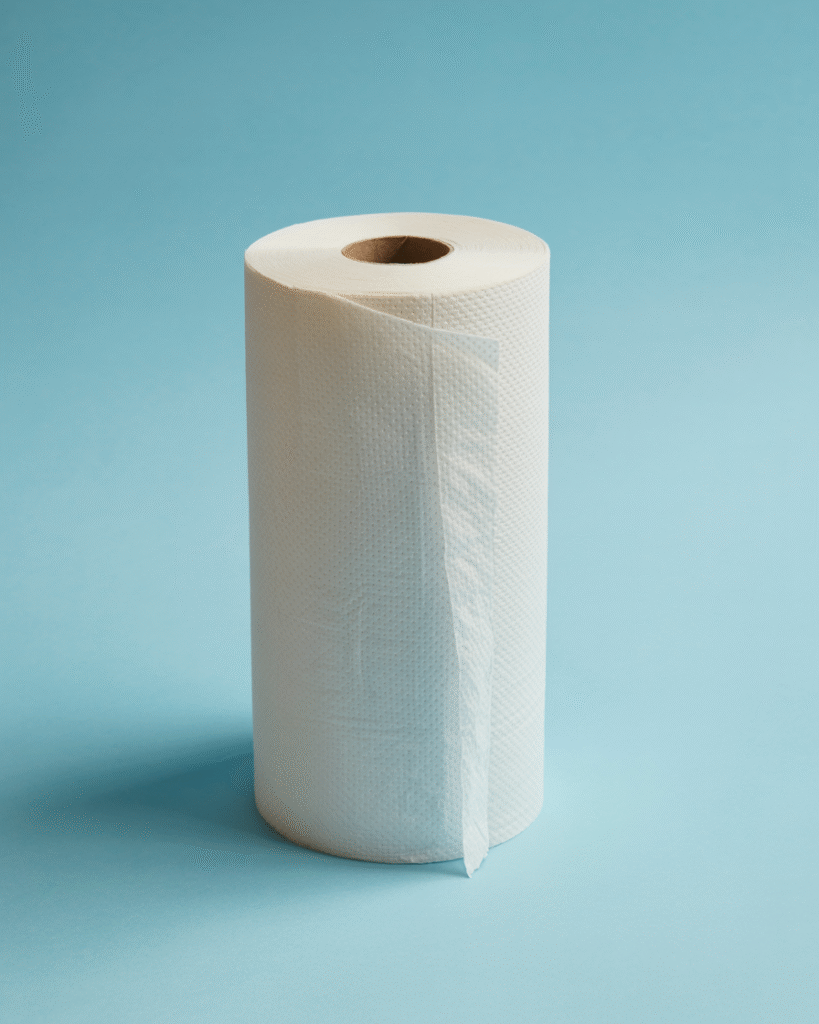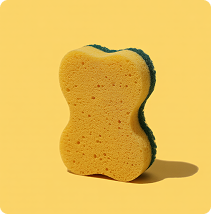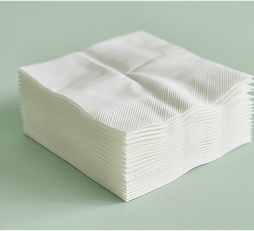Between groceries, school lunches, and the endless tide of paper towels and plastic bags, I felt like I was pouring money straight into the trash. Sound familiar? Last year, I tracked every disposable item I bought and the total shocked me. But switching to reusables quietly refunded me over $100/month. Let me show you exactly how, with no extreme lifestyle changes needed.
Where My $2,861 Was Going Every Year
I did a “Home Audit” and discovered how much money was literally walking out my door in plastic bags and paper towels. These are necessities we rebuy weekly, but I wondered what would happen if I paid just once.
| What I Was Buying | My Daily/Weekly Cost | My Annual Total |
|---|---|---|
| Coffee shop visits (vs making at home) | $5/day | $1,825 |
| Grocery store bags | $1/week (10 bags @ $0.10) | $52 |
| Paper towels | $2/week (1 roll) | $104 |
| Water bottles | $2/day | $730 |
| Lunch/snack containers | ~$3/week | $150 |
| MY TOTAL ANNUAL COST: | $2,861 |
That number made my stomach drop. Nearly three thousand dollars for things I threw away immediately. The coffee was the biggest shock because I was buying a $5 latte instead of making coffee at home for pennies.
My Monthly Reality Check
- Monthly drain: $238 disappearing into trash
- Weekly waste: $55 on items I used once
- Daily loss: Nearly $8 on disposables
What I Bought Instead (And How Much Each Saves Me)
These items are workhorses that simplified my routine and paid for themselves quickly.
When I started looking for solutions, I focused on items that would actually survive my chaotic household:
☕ My Coffee Solution: Insulated Tumbler + Home Brewing
- Replaced: My daily coffee shop purchases
- My investment: $25 tumbler + $50 coffee setup
- My annual savings: $1,825 (by making coffee at home)
- My payback time: 2 weeks of skipped coffee shop visits
- Bonus: Coffee stays hot longer, I can customize to my taste
🛍️ My Shopping Solution: Canvas Grocery Bags
- Replaced: Plastic store bags
- My investment: $10 for two bags
- My annual savings: $52
- My payback time: 6 months
- Bonus: They hold twice as much, no more spillage in my car
🧻 My Cleaning Solution: Cloth Towels & Napkins
- Replaced: Paper towels and napkins
- My investment: $30 for starter set
- My annual savings: $104
- My payback time: 4 months
- Bonus: Prettier counter, no more midnight store runs
💧 My Hydration Solution: Reusable Water Bottles
- Replaced: Single-use plastic bottles
- My investment: $50 for family set
- My annual savings: $730
- My payback time: 1 month
- Bonus: The kids customized theirs with stickers
🥪 My Food Storage Solution: Glass Containers & Wraps
- Replaced: Ziplocs and takeout containers
- My investment: $50 for complete set
- My annual savings: $150
- My payback time: 4 months
- Bonus: See-through storage, microwave safe
My total one-time investment: $215 (Less than what I was spending on disposables every three months)
The Math: How I Actually Saved $1,200
Here’s the simple calculation that transformed my budget:
My Savings Breakdown
| Timeframe | My Calculation | My Savings |
|---|---|---|
| Year 1 | $2,861 disposables – $215 reusables | $2,646 |
| Year 2+ | $2,861 (no reusable costs) | $2,861 |
| My conservative estimate | Accounting for replacements | $1,200+/year |
What My $1,200 Actually Bought Me:
- 🛒 One month of groceries for my family of four
- ✈️ Weekend family getaway with hotel and activities
- ⚡ Six months of electric bills
- 🚗 Car insurance for the year
- 💰 Emergency fund boost of $100/month
Money that stayed in my checking account instead of disappearing into the trash.
The Unexpected Benefits I Discovered
The money savings got me started, but these bonuses made the switch permanent:
🏠 My Home Got More Organized
- ✅ Fewer cluttered cabinets (goodbye, plastic bag ball under my sink!)
- ✅ Better storage solutions (glass containers stack neatly)
- ✅ Cleaner countertops (no giant paper towel rolls)
👨👩👧👦 My Family Got Healthier
- ✅ Healthier lunches for my kids (no plastic chemicals leaching into food)
- ✅ Better hydration habits (attractive water bottles get used more)
- ✅ Less processed food (easier to pack homemade snacks)
⏰ I Got Time Back
- ✅ Less time shopping for disposables (one less aisle to navigate)
- ✅ No more midnight runs for paper towels
- ✅ Faster meal prep (grab containers and go)
😌 I Got Peace of Mind
- ✅ That proud feeling at checkout when I say “no bag needed”
- ✅ Never running out of napkins during dinner parties
- ✅ Setting a good example for my kids about smart spending
Environmental bonus: I kept over 1,000 plastic items out of landfills last year. Pretty great for the planet, but the money savings is what kept me motivated day-to-day.
How I Started (Without Overwhelming Myself)
I didn’t overhaul my entire kitchen overnight. Here’s the action plan that worked for me:
🎯 Step 1: I Found My Biggest Money Drain
I chose the option that frustrated me most:
| If this annoys you most… | I started with this… | My payback time |
|---|---|---|
| 💸 Daily coffee shop spending | Home brewing setup + tumbler | 2 weeks |
| 🛍️ Bags that always rip | 2 canvas grocery bags | 3 months |
| 🧻 Always out of paper towels | Cloth rag basket | 2 months |
| 💧 Buying water constantly | Family water bottle set | 3 weeks |
🎮 Step 2: I Made It Fun for My Family
- I involved my family: Let the kids pick their own water bottles. They were way more likely to use something they chose
- I tracked savings: Put the money I would have spent in a jar and watched it grow
🧪 Step 3: My “Paper Towel Test”
This was my perfect gateway swap:
- I put a basket of cloth rags next to where I used to keep paper towels
- I used the cloth for one week
- I noticed the difference (spoiler: I barely missed paper towels)
- I enjoyed the heavier wallet feeling
📈 Step 4: How I Built Momentum
- I focused on my biggest expense first (coffee was killing my budget)
- I gave myself permission to take it slow
- I celebrated small wins (even my first $20/month saved felt amazing!)
Building momentum was key. Once I saw the savings from one swap, the next ones felt effortless.
My Bottom Line
Ready to see what getting money back in your budget feels like? You don’t need to be perfect. You just need to start.
I wasn’t trying to become an eco-warrior. I just realized I was throwing away money every single week, and decided to keep it instead. That mindset shift changed everything.
👉 Start with one item that’s driving you crazy financially
👉 Give yourself permission to take it slow
👉 Track your savings for the first month (you might be amazed)
What’s YOUR biggest disposable frustration? The thing that makes you shake your head every time you have to buy it again? Start there. Your future self (and your bank account) might thank you.
P.S. I’d love to hear about your first money-saving swap! What made the biggest difference in your household budget?



